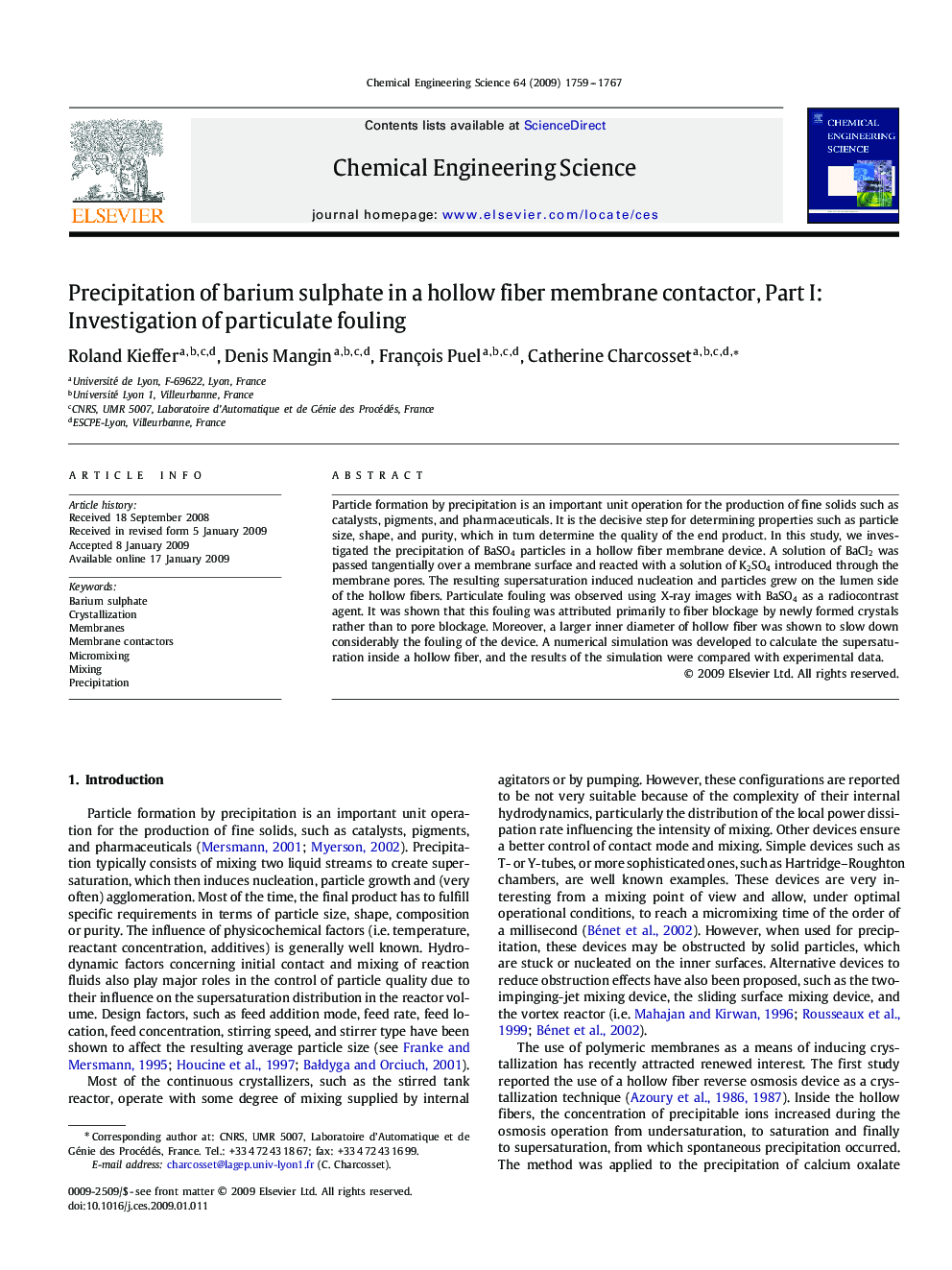| Article ID | Journal | Published Year | Pages | File Type |
|---|---|---|---|---|
| 157478 | Chemical Engineering Science | 2009 | 9 Pages |
Particle formation by precipitation is an important unit operation for the production of fine solids such as catalysts, pigments, and pharmaceuticals. It is the decisive step for determining properties such as particle size, shape, and purity, which in turn determine the quality of the end product. In this study, we investigated the precipitation of BaSO4 particles in a hollow fiber membrane device. A solution of BaCl2 was passed tangentially over a membrane surface and reacted with a solution of K2SO4 introduced through the membrane pores. The resulting supersaturation induced nucleation and particles grew on the lumen side of the hollow fibers. Particulate fouling was observed using X-ray images with BaSO4 as a radiocontrast agent. It was shown that this fouling was attributed primarily to fiber blockage by newly formed crystals rather than to pore blockage. Moreover, a larger inner diameter of hollow fiber was shown to slow down considerably the fouling of the device. A numerical simulation was developed to calculate the supersaturation inside a hollow fiber, and the results of the simulation were compared with experimental data.
